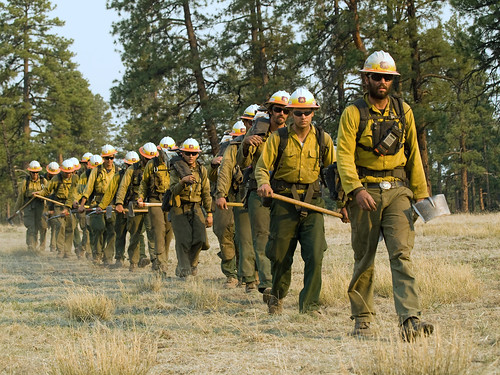

It takes a certain type of person to fight wildfires. It’s not what they look like. Or sound like. It’s not their heritage or their culture. It’s their heart.
A seven-minute U.S. Forest Service recruitment video, “The Heart of a Firefighter,” takes viewers as close to being as firefighter as possible through a small screen.
“We really wanted to show the heart and passion of our firefighters,” said Jason Steinmetz, Emergency Management Specialist with the Forest Service’s Fire Aviation and Management program and co-producer of the video. “With new filming technologies available it helps you feel what it’s like to be a firefighter.”
The video opens with the crackling sound of fire then, slowly, the sound of a heartbeat intermixes with sounds of thunder, firefighters talking to each other over radios and, increasingly, the sound of tribal vocals and drumming mixed with the electronic music created by A Tribe Called Red.
Intermixed are wildland firefighters describing their jobs and their emotional connection to the work that they do.
“When I smell smoke, I got to go,” one firefighter said in the video. “That gets into your blood and it gets into your heart. When you save a bunch of houses and people come out and shake your hand, that’s just a good feeling that stays with you the rest of your life.”
Every year more and more of the Forest Service budget is allocated to fighting fires. For the last 10 years fire prevention costs have soared consuming nearly half the agency’s overall budget. This requires the Forest Service to seek additional funding for other important fire prevention programs, like forest restoration that can actually keep fires from becoming catastrophic in the first place.
“It’s never a given. Some years we may need much more money than other years,” said Tom Harbour, director of the agency’s Fire and Aviation Management. “But no matter what, we need firefighters who are well trained and well equipped to handle the unpredictability of fire in our national wild lands.”
If the agency doesn’t have the proverbial boots on the ground, no manner of technology can do what a firefighter can in helping to stop a raging fire.


